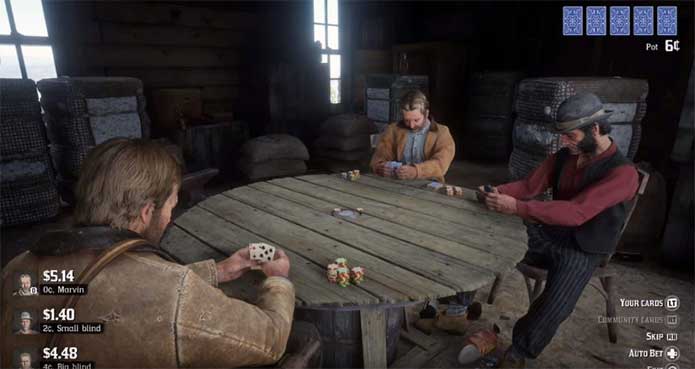Poker isn’t just about the cards you’re dealt – it’s about how you play them. Even experienced players fall into traps that drain their bankroll hand after hand. Let’s break down these wallet-emptying errors and fix them fast.
Playing Too Many Hands
The most common leak in any poker player’s game? Getting involved with too many starting hands.
That promising K-7 offsuit might look tempting, but it’s a money pit waiting to happen. Position matters enormously here – a hand that’s playable in late position becomes a disaster from under the gun.
Fix: Tighten your starting hand requirements, especially from early positions. Studying winning strategies for cash games will help you understand which hands deserve your chips and which should be folded without a second thought. Quality beats quantity every time.
Ignoring Position
 Your seat at the table might be the most undervalued aspect of poker strategy. Players who act last have an information advantage worth its weight in chips.
Your seat at the table might be the most undervalued aspect of poker strategy. Players who act last have an information advantage worth its weight in chips.
Playing weak hands from early positions or failing to capitalize on late positions costs players thousands. The difference between being first or last to act can transform a marginal hand into either a winner or a loser.
Fix: Play tighter from early positions and looser from later ones. Use your positional advantage to apply pressure when you’re last to act.
Emotional Decision-Making (Tilt)
Had a bad beat? Ready to get those chips back right away? That’s tilt talking, not strategy.
Emotional decisions override logical thinking. Your bankroll suffers when anger, frustration, or even overconfidence dictates your play instead of math and observation.
Fix: Take a break after tough losses. Develop a pre-game routine that includes mental preparation. Some players use breathing techniques or set strict stop-loss limits to combat tilt.
Poor Bankroll Management
 Your poker skills mean nothing if you’re playing stakes that can wipe you out in a few bad sessions.
Your poker skills mean nothing if you’re playing stakes that can wipe you out in a few bad sessions.
With the U.S. gambling market projected to reach $121.29 billion in 2025, according to recent industry data, many players feel pressure to play bigger games than their bankroll can support.
Fix: Follow the 20-30 buy-in rule for cash games. If you’re playing $1/$2 with $200 buy-ins, you need $4,000-$6,000 dedicated to poker. Drop down in stakes when necessary – your ego might get bruised, but your wallet will thank you.
Failing to Table Select
Not all poker games are created equal. The table with the businessman splashing around chips offers more value than the one filled with headphone-wearing 20-somethings.
Fix: Scout tables before sitting down. Look for players with large stacks who play lots of hands, seem distracted, or show signs of recreational play. Don’t sit with players better than you just to prove something.
Playing Autopilot Poker
 After hours at the table, it’s easy to fall into patterns. You check-raise the same spots, c-bet the same frequency, and fold to aggression in predictable ways.
After hours at the table, it’s easy to fall into patterns. You check-raise the same spots, c-bet the same frequency, and fold to aggression in predictable ways.
Fix: Stay in the present. Take notes during sessions. Ask yourself “why” before every significant action. This mindfulness prevents costly automatic decisions.
Neglecting Hand Reading Skills
Many players focus on their cards rather than putting opponents on ranges.
Fix: After each significant hand, practice working backward through the betting action to narrow down what your opponent might have had. This exercise builds the muscle memory needed to read hands in real time.
Defending Blinds Too Much
 The blinds feel like your money, and it hurts to let them go. But defending with marginal hands against raises – especially from early positions – compounds losses over time.
The blinds feel like your money, and it hurts to let them go. But defending with marginal hands against raises – especially from early positions – compounds losses over time.
Fix: Develop solid defending ranges based on position and opponent tendencies rather than emotion.
Final Thoughts
While these mistakes can derail your poker journey, recognizing them is half the battle. Combine disciplined study with honest self-assessment, and you’ll plug these leaks faster than you might expect. Your poker account balance will show the difference.


 by Symphonie
by Symphonie